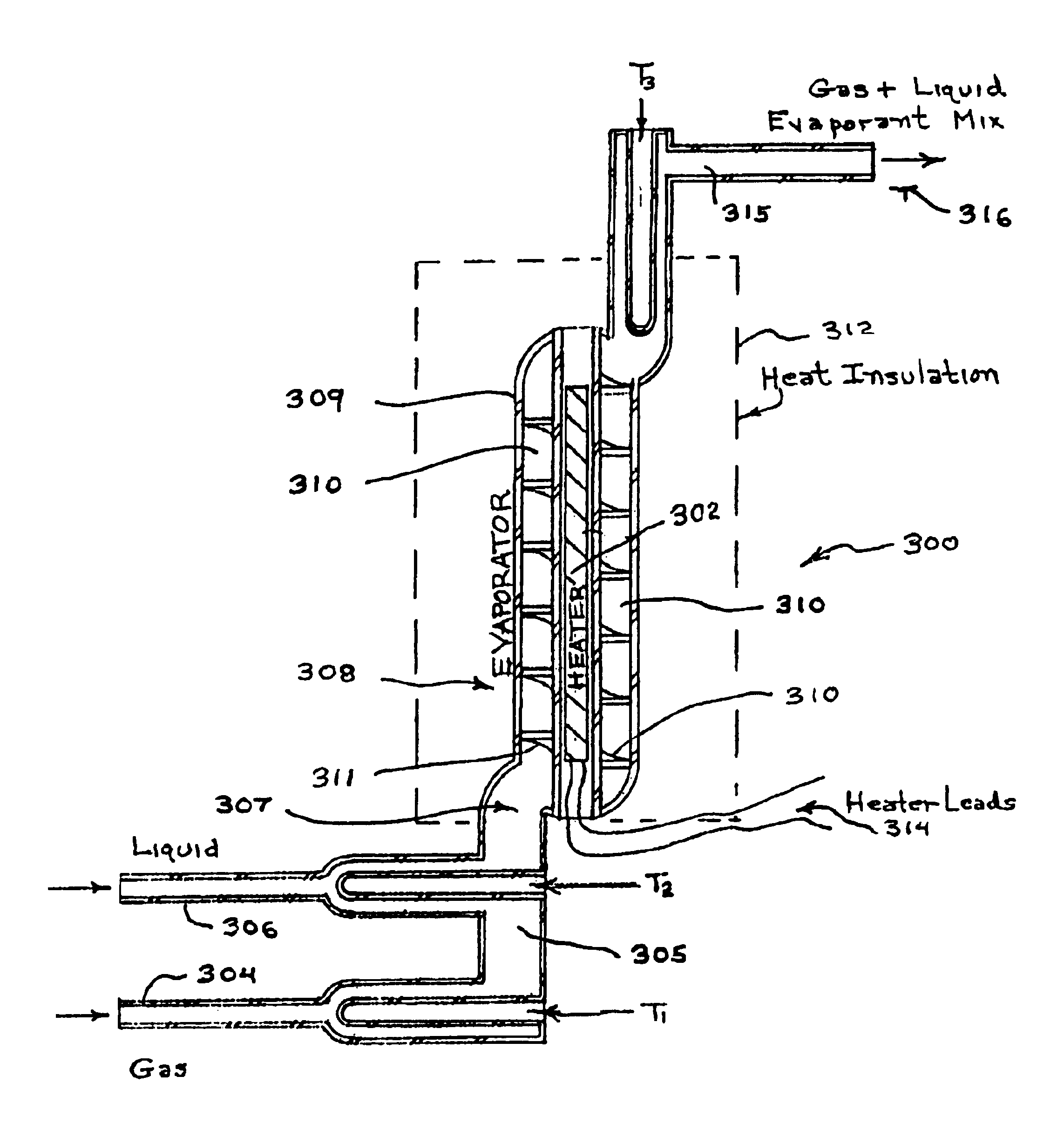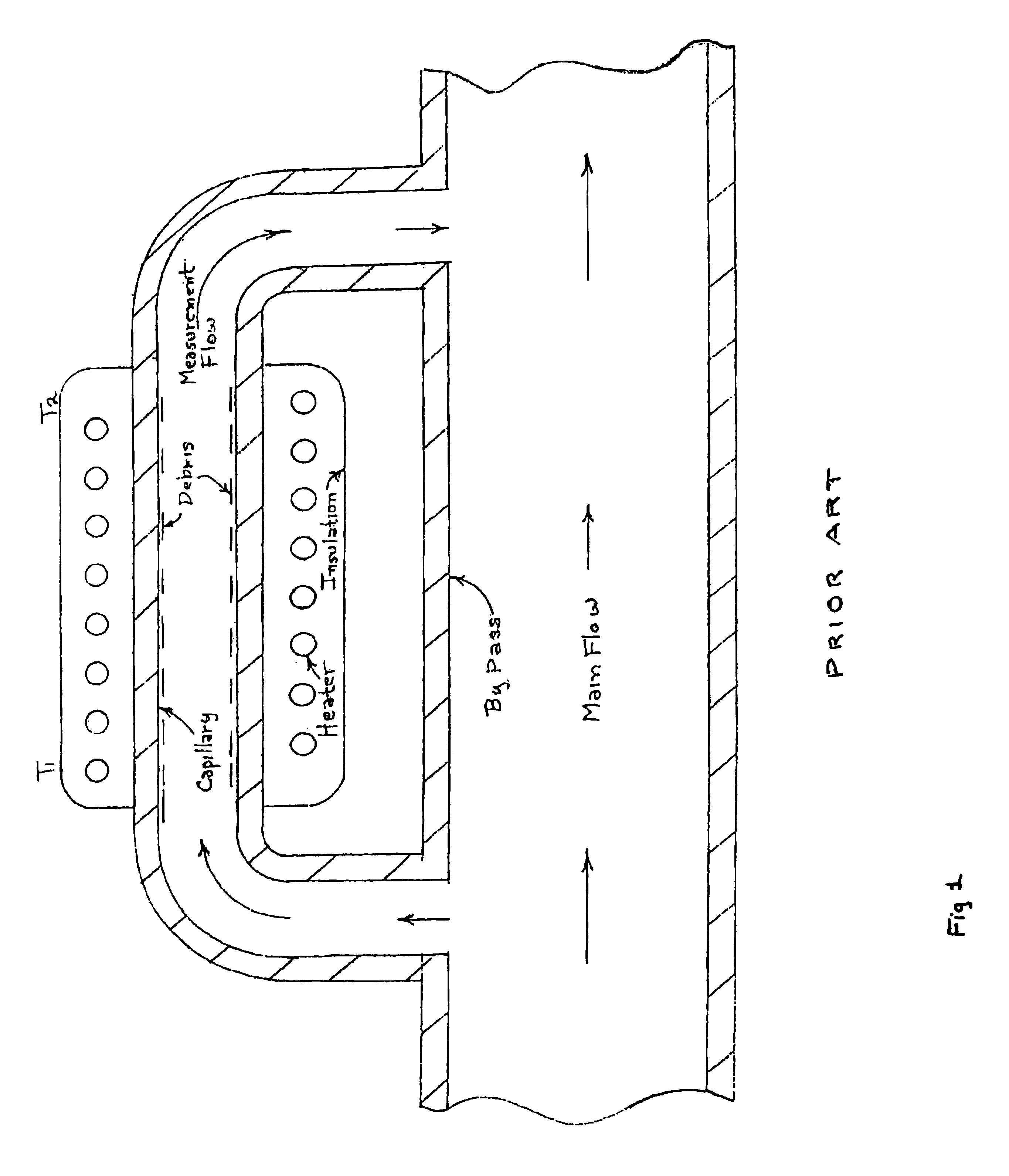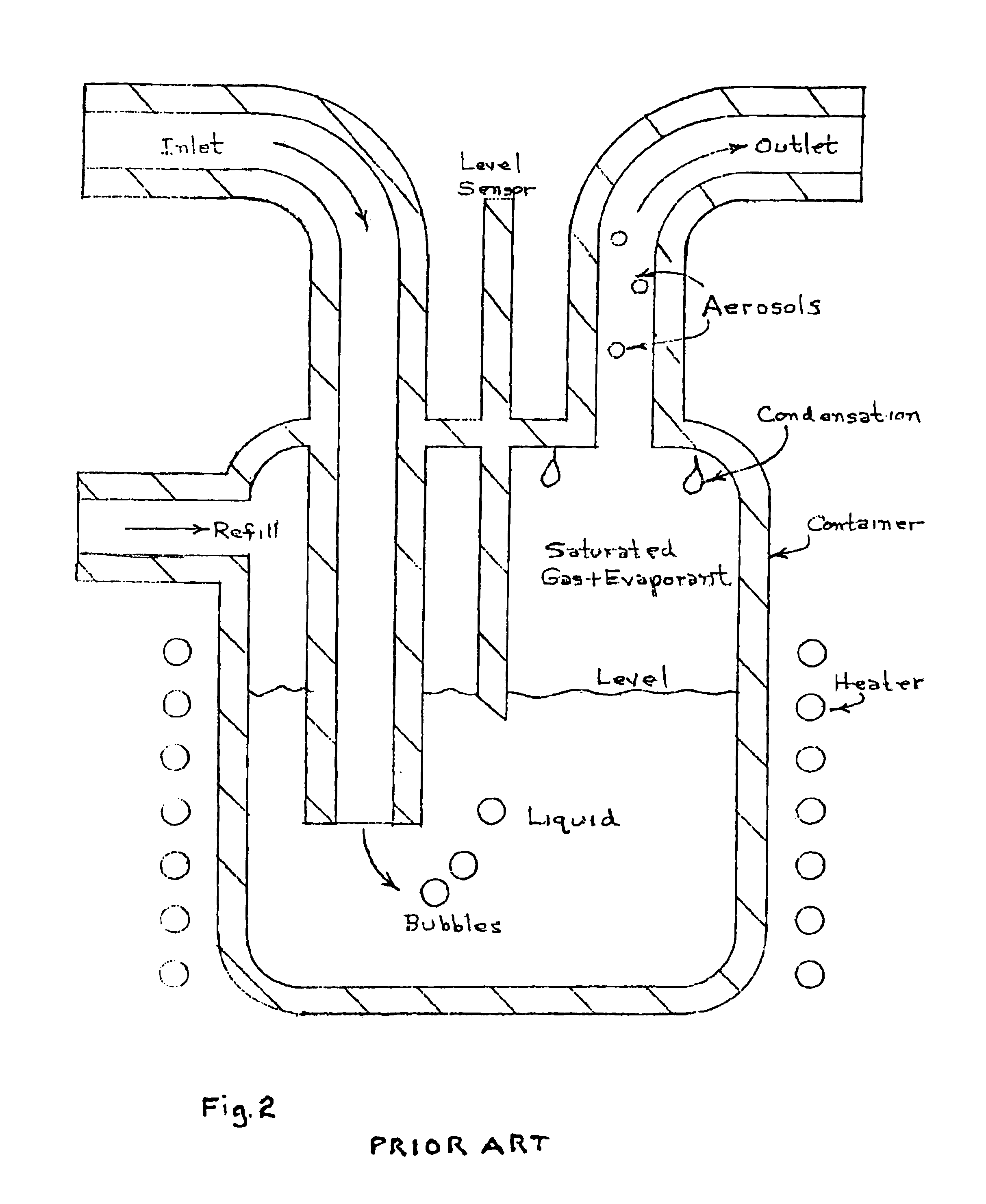Flow measurement device
a flow measurement and flow rate technology, applied in the direction of liquid/fluent solid measurement, instruments, heat measurement, etc., can solve the problems of inability to accurately measure flow rate, inability to accept process variations, and all share a number of problems and limitations, so as to eliminate bubbler pressure sensitivity, improve accuracy, and control flow rate
- Summary
- Abstract
- Description
- Claims
- Application Information
AI Technical Summary
Benefits of technology
Problems solved by technology
Method used
Image
Examples
working example
[0031]When the device of FIG. 3 is used in its simplest form (measuring gas flow only), the electrical power required (E) is equal to the product of specific heat (S.H.) times the temperature change produced by the device (ΔT) times the gas flow rate (G)
Or: E (Watts)=S.H. (Joules per gram per ° C.)Δ T (° Centigrade)×G (Grams per second)×
Or:
E=S.H.×ΔT×G
[0032]For argon gas (commonly used), SH=0.523
[0033]Any ΔT can be chosen which doesn't damage apparatus or gas. A convenient ΔT may be 85° C.
[0034]In that case,
E=0.523×85×G=44.455G
Or, G=0.0225E
[0035]Thus, measurement of the input wattage is a direct indication of the gas flow. It may be more convenient to select an output temperature before hand as part of the process. The selection would be based on one not damaging to apparatus or gas, maximization of measurement signal, minimization of delivery tube heating etc. While such selection sounds complicated, it is instead a means of optimizing process conditions ...
PUM
| Property | Measurement | Unit |
|---|---|---|
| pressure | aaaaa | aaaaa |
| humidity | aaaaa | aaaaa |
| pressure | aaaaa | aaaaa |
Abstract
Description
Claims
Application Information
 Login to View More
Login to View More - R&D
- Intellectual Property
- Life Sciences
- Materials
- Tech Scout
- Unparalleled Data Quality
- Higher Quality Content
- 60% Fewer Hallucinations
Browse by: Latest US Patents, China's latest patents, Technical Efficacy Thesaurus, Application Domain, Technology Topic, Popular Technical Reports.
© 2025 PatSnap. All rights reserved.Legal|Privacy policy|Modern Slavery Act Transparency Statement|Sitemap|About US| Contact US: help@patsnap.com



